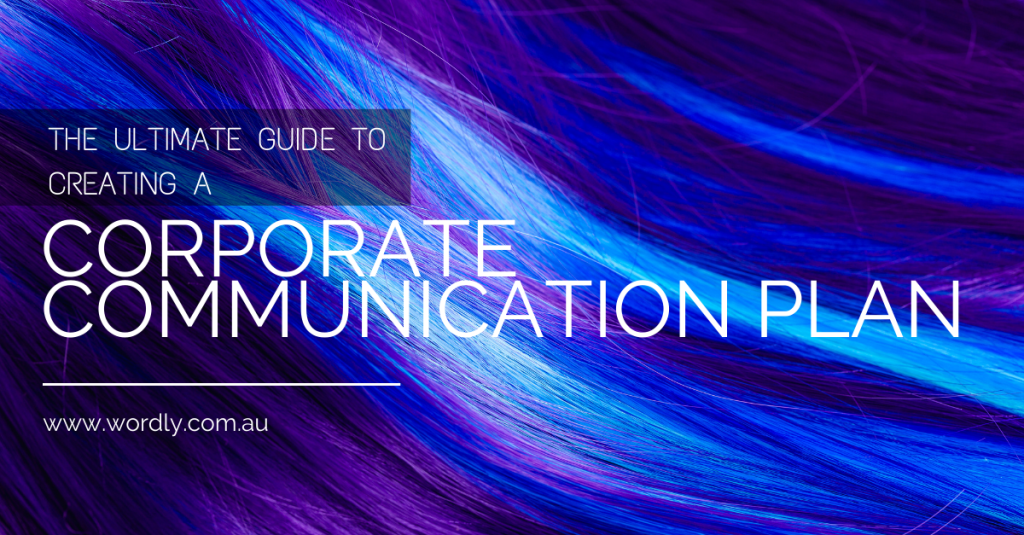Communicating – it’s something that we’re all well-versed in. But, there’s a gaping chasm between inciting mindless yarning versus thought-out conversations.
Ever been cornered on a night out by that mate who’s had one too many drinks and has made it their personal mission to rally you to overthrow the patriarchy? Their heart is in the right place and their messaging is certainly solid. But the slurring of every third word and sloshes of beer that keep winding up on your sleeve with every eccentric hand gesture kind of undermines the delivery.
Corporate communication operates much the same, sans beer. You can yell your messaging across the void all you like, but unless you’re communicating effectively and strategically, it’ll usually fall on deaf ears – and saturated sleeves.
If you want to know how to make your company’s voice heard, then we have the ultimate guide to establishing a corporate communication plan that works.

Internal vs External Comms Plans
There are two variations of comms plans you may want to consider formulating – an Internal Communication Plan and an External Communication Plan. This first is centred around connecting with those inside the walls of your company – employees, leadership, management, and board or committee members. The second informs the messaging shared outside your company to any stakeholders including PR and media, customers, industry associations, and regulatory or governing bodies.
Both are important tools in providing clear and consistent messaging across your business. However, the messaging, distribution channels and underlying objectives are going to differ between each plan.
How to Form an Effective Communication Plan
Objectives
Alright, let’s knuckle down on precisely why you’re communicating with your stakeholders – what is it you want to achieve? Try and avoid broad sweeping statements such as ‘tell my customers to shop with me’ and think specific, niche objectives. The old ‘SMART goals’ get a thrashing in the strategic sphere, but for good reason. They’re a great way to set strong communication goals, which should be derived from your overall organisation goals.
If you’re looking internally, your objective may be to increase employee retention rates or employee engagement.
Externally, you may want to improve public perception of your brand, or sales of your latest product range.
Target Audience
The next step is directing who you want to target these goals towards. Section your stakeholders into groups according to which objective applies to them. It may be a no-brainer that your employees will be the focus of employee engagement objectives. But think about smaller sectors that may benefit from messaging around employee retention – such as management and leadership teams.
Externally, your objectives could be targeted at the media for a PR campaign, or prospective customers if you’re aiming to increase customer acquisition.
It’s worth doing some background on the demographics of each sector (age, location, SES, etc.) as this will inform the most effective way to reach them.
Messaging
Now we’ve arrived at the crux of it, what it is you want to say to your target audiences. Ask yourself: what do I want my reader to take from this? Devise key messaging points which you want to convey to your audience and then package them in the appropriate tone and format for each sector. Are you going to record an audio grab for digital media? Will you reach your customers through social media graphics? Or is a staff newsletter going to be the most effective way to communicate with your employees?
Distribution
The examples above lead us nicely to the next step which is deciding where and when you spread this content. As we mentioned earlier, this should be guided by the demographics of each stakeholder group. If majority fall into the 55+ age category, a social media campaign is unlikely to see much success. Think about where your target audience receive most of their information – is it social media, print, television, radio, podcasts, email? Also consider how frequently you’ll be pinging out your content.
Evaluation
Before you dart off – we aren’t done just yet.
A communication plan is no ‘one hit wonder’ business. When it’s set up correctly it should become an evolving cycle of planning, implementing, revising, and re-structuring. Evaluation forms a key part of this process. If you created measurable goals from the outset, then they will typically have inbuilt methods to determine its success.
Let’s say you were seeking to increase employee retention by 5% over 6 months. Your evaluation process will require you to assess your employee retention percentile at the conclusion of 6 months.
Feedback is a huge component of evaluation, so seek it out at every opportunity. Listen to what worked, what didn’t and take this into your next strategy meeting.
We’ve given you the puzzle pieces, now it’s up to you to unite these in a killer communication plan. If we lost you back at SMART objectives, or you simply don’t have the time to construction your own plan, we’ve got just the solution. At Wordly we’ve been helping companies construct bespoke communications plans that nail their business objectives for years. Let’s have a chat about how we can structure a sizzling comms plan for whatever your goals may be.



